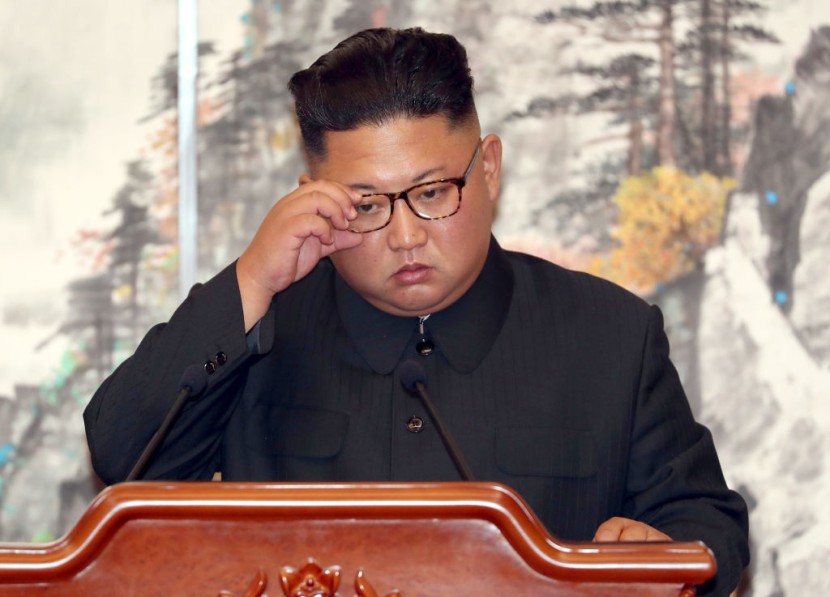
The uranium mine that supplies North Korea's nuclear weapons has seen a succession of cave-ins, with the magnitude of the calamity visible from space.
Recent images of the Pyongsan mine collapse were uncovered by Jacob Bogle, who produced a detailed map of the country based on satellite images. Per Daily Mail, the mine is the regime's primary supply of uranium ore, which can be refined into yellowcake and subsequently weapon-grade uranium.
North Korea Major Uranium Mine Collapsed
Now that the mine has been struck by calamity, satellite images have captured the rapid development of enormous depressions in the earth near the entrance of the mine. Bogle stated that all indicators led to a collapse.
Two similar pits, each with a diameter of more than 100 meters, are readily apparent in satellite images. Unknown is the human cost of the cave-ins, but evidence suggests that individuals continue to work at the plant.
With each fresh satellite image, the site's garbage mounds have continued to grow, while new above-ground structures have been constructed. Even with the recent failures, the supply of uranium for Kim Jong-nuclear un's weapons is expected to continue, given the size of the Pyongsan mine.
Unknown is the human cost of the cave-ins, but evidence suggests that individuals continue to work at the plant. The garbage piles at the site have continued to grow with each successive satellite image, while new structures have been constructed above ground.
Even with the recent disasters at the Pyongsan mine, the flow of uranium for Kim Jong-nuclear un's weapons is expected to continue. Bogle cautioned that these cave-ins may only be the beginning, stating, North Korea's mining industry is one of the most hazardous.
Less than 30 miles separate the Pyongsan mine from the South Korean border, which is 62 miles southeast of Pyongyang, as per Mirror. During a 1992 visit by inspectors from the International Atomic Energy Agency, the Kim regime admitted to extracting uranium from coal there.
Read Also : Joe Biden Admits Defeat to Aubrey plaza
North Korea Urges to Build 300 Nuclear Arsenal
North Korea, which now possesses an estimated 80 to 90 nuclear bombs, plans to construct a 300-weapon nuclear arsenal, according to a new analysis issued Thursday by a South Korean government think group, UPI reported. At its Yongbyon nuclear plant, North Korea has produced 4,506 pounds of highly enriched uranium of weapon-grade purity. It is also estimated that the government owns between 150 and 172 pounds of plutonium.
Pyongyang's existing stockpile of fissile material could produce between 80 and 90 nuclear weapons, according to a study conducted by the Korea Institute for Defense Analysis (KIDA) in Seoul, as reported by United Press International (UPI) on Friday.
If fissile material production continues at the current rate, North Korea could possess up to 166 nuclear bombs by 2030, according to the study by a think tank. The regime of North Korean leader Kim Jong-un reportedly aims to increase its overall arsenal to 300 warheads, according to KIDA research.
In response to alleged threats from South Korea and the United States, the North Korean leader called for exponential growth in the country's nuclear arsenal at the Workers' Party's year-end gathering.
On the penultimate day of a six-day plenary session of his governing party, Kim referred to South Korea as an undeniable enemy and blamed the United States for escalating pressure on his country to maximum levels by sending military assets to the Korean Peninsula repeatedly.
Kim said that Pyongyang must mass-produce tactical nuclear weapons meant for use on the battlefield and simultaneously create a new intercontinental ballistic missile (ICBM) that would provide the North with rapid counter-strike capabilities.
In September 2022, North Korea approved a law authorizing the use of preemptive nuclear strikes for self-defense. Under the law that was passed by the country's rubber-stamp legislature, Pyongyang stated that it will launch a preemptive nuclear strike automatically and quickly to destroy hostile forces if a foreign nation poses an imminent threat to North Korea and its dictator, Kim Jong-un.
With the United States, South Korea, and Japan carefully monitoring North Korea's nuclear test site, there are suspicions that Pyongyang may soon execute its seventh underground nuclear test. Between 2006 and 2017, North Korea conducted six nuclear tests at the Punggye-ri nuclear test site.
Related Article: New Zealand Prime Minister Reprioritization Plans
@YouTube








